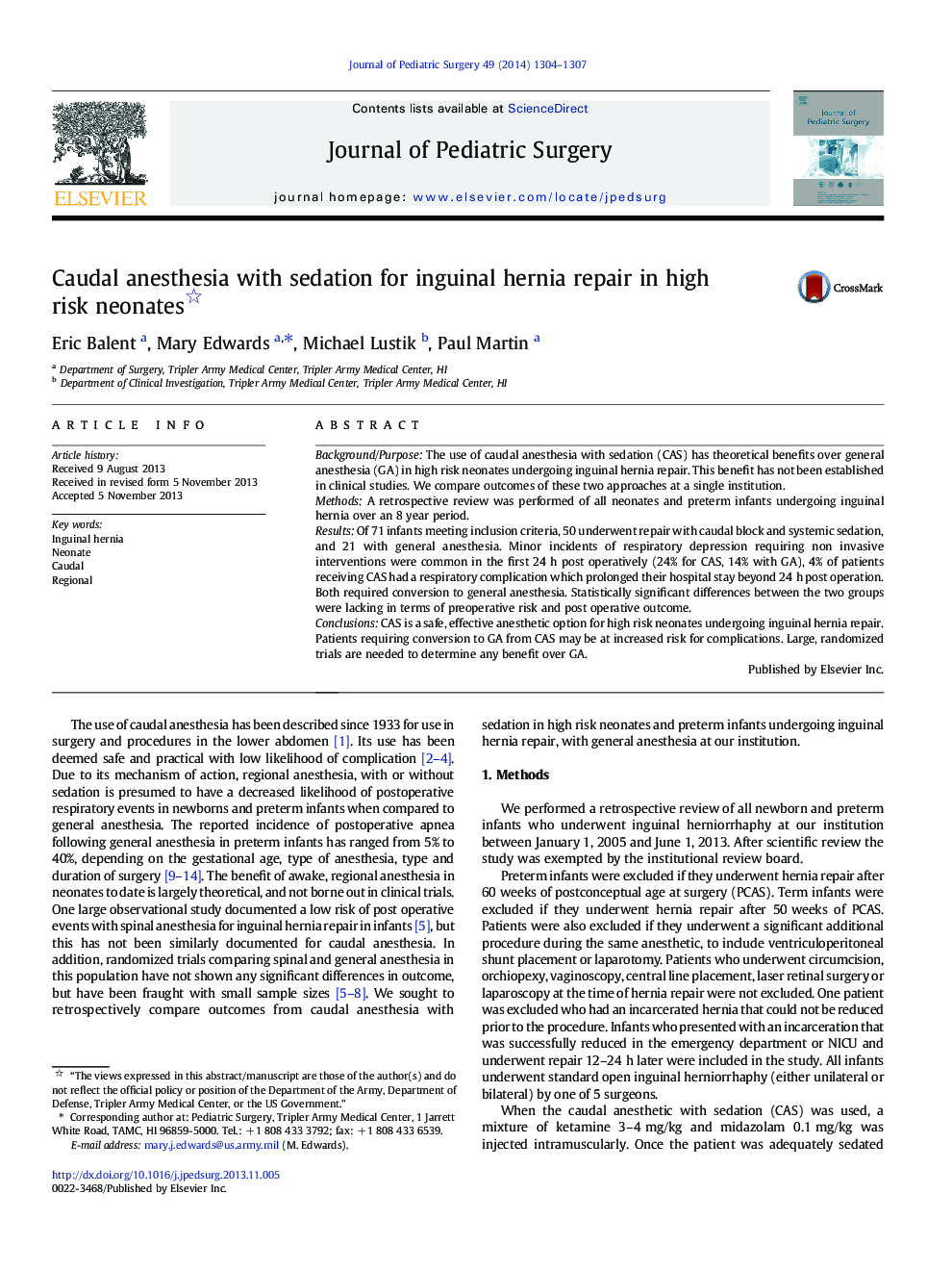| Article ID | Journal | Published Year | Pages | File Type |
|---|---|---|---|---|
| 4155793 | Journal of Pediatric Surgery | 2014 | 4 Pages |
Background/PurposeThe use of caudal anesthesia with sedation (CAS) has theoretical benefits over general anesthesia (GA) in high risk neonates undergoing inguinal hernia repair. This benefit has not been established in clinical studies. We compare outcomes of these two approaches at a single institution.MethodsA retrospective review was performed of all neonates and preterm infants undergoing inguinal hernia over an 8 year period.ResultsOf 71 infants meeting inclusion criteria, 50 underwent repair with caudal block and systemic sedation, and 21 with general anesthesia. Minor incidents of respiratory depression requiring non invasive interventions were common in the first 24 h post operatively (24% for CAS, 14% with GA), 4% of patients receiving CAS had a respiratory complication which prolonged their hospital stay beyond 24 h post operation. Both required conversion to general anesthesia. Statistically significant differences between the two groups were lacking in terms of preoperative risk and post operative outcome.ConclusionsCAS is a safe, effective anesthetic option for high risk neonates undergoing inguinal hernia repair. Patients requiring conversion to GA from CAS may be at increased risk for complications. Large, randomized trials are needed to determine any benefit over GA.
